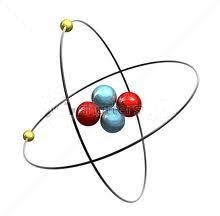Helium - Atomic Number 2 Traditional Geocache
-
Difficulty:
-

-
Terrain:
-

Size:  (small)
(small)
Please note Use of geocaching.com services is subject to the terms and conditions
in our disclaimer.
This cache is the second in a series of 22 hides to be named after
chemical elements and placed on Ramsey streets (and sometimes
points North) with the same name. The series will speed up the
qualification requirements for challenge cache
GC2P5TJ, since some already published elements
require traveling great distances. The closest cache named
Helium is located 70 miles North.

History: Helium, the second most abundant element
in the universe, was discovered on the sun before it was found on
the earth. Pierre-Jules-César Janssen, a French astronomer, noticed
a yellow line in the sun's spectrum while studying a total solar
eclipse in 1868. Sir Norman Lockyer, an English astronomer,
realized that this line, with a wavelength of 587.49 nanometers,
could not be produced by any element known at the time. It was
hypothesized that a new element on the sun was responsible for this
mysterious yellow emission. This unknown element was named helium
by Lockyer.
The hunt to find helium on earth ended in 1895. Sir William Ramsay,
a Scottish chemist, conducted an experiment with a mineral
containing uranium called clevite. He exposed the clevite to
mineral acids and collected the gases that were produced. He then
sent a sample of these gases to two scientists, Lockyer and Sir
William Crookes, who were able to identify the helium within it.
Two Swedish chemists, Nils Langlet and Per Theodor Cleve,
independently found helium in clevite at about the same time as
Ramsay.
Sources: there is very little helium on earth as
nearly all present during and immediately after the earth's
formation has long since been lost as it is so light. Just about
all the helium remaining on the planet is the result of radioactive
decay. While there is some helium in the atmosphere, currently its
isolation from that source by liquefaction and separation of air is
not normally economic. This is because it is easier, and cheaper,
to isolate the gas from certain natural gases. Concentrations of
helium in natural gas in the USA are as high as 7% and other good
sources include natural gas from some sources in Poland. It is
isolatable from these gases by liquefaction and separation of from
the natural gas. This would not normally be carried out in the
laboratory and helium is available commercially in cylinders under
pressure.
Uses:
- To fill balloons (blimps) and for pressurizing liquid fuel
rockets
- Mixtures of helium and oxygen are used as an artificial 'air'
for divers and others working under pressure. Helium is used
instead of the nitrogen in normal air because, after a long dive,
helium leaves the body faster than nitrogen, allowing faster
decompression.
- As a gas shield in the vicinity of arc welding and in
cryogenics, preventing, for example, any reaction of hot metal
welds with oxygen.
- In the semiconductor industry to provide an inert atmosphere
for growing silicon and germanium crystals
- A high temperature gas in titanium and zirconium
production
- A carrier gas in in gas chromatography
- By virtue of its very low temperature, liquid helium is used to
produce superconductivity in some ordinary metals
Additional Hints
(No hints available.)